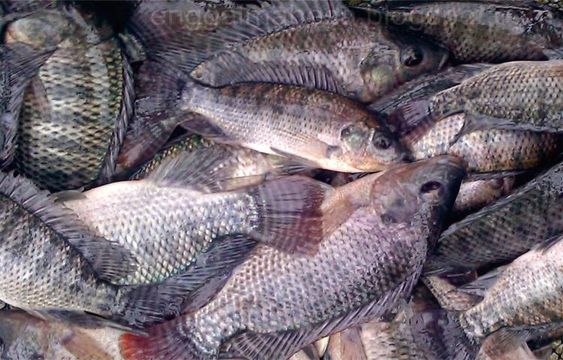Tilapia Pond Efficiency: Optimizing Your Production for Success
Tilapia Pond Efficiency, the farming of tilapia fish in ponds, is a rapidly growing sector of the global food industry. Prized for its fast growth, mild flavor, and versatility in cooking, tilapia offers a sustainable and delicious protein source. However, maximizing profitability in tilapia farming hinges on achieving optimal pond efficiency.
This article delves into the various aspects of tilapia pond efficiency, exploring key factors that influence it and strategies for improvement.
Contents
Understanding Tilapia Pond Efficiency
Tilapia pond efficiency refers to the ability of a pond to produce the highest possible yield of marketable tilapia with minimal resource input. It encompasses various aspects, including:
- Biological Efficiency: This measures how well tilapia convert feed into fish flesh. A good indicator is the Feed Conversion Ratio (FCR), which represents the amount of feed required to produce one unit of fish weight. Lower FCR values indicate better biological efficiency.
- Water Use Efficiency: This focuses on optimizing water usage in the pond. It involves minimizing water loss through evaporation and seepage while ensuring adequate water quality for tilapia health.
- Pond Management Efficiency: This pertains to the effectiveness of pond management practices, including stocking density, aeration, and disease prevention.
Key Factors Influencing Tilapia Pond Efficiency
Several factors significantly impact tilapia pond efficiency. Here’s a breakdown of the most crucial ones:
- Water Quality: Pristine water conditions are essential for optimal tilapia growth and survival. Maintaining the correct levels of dissolved oxygen, pH, ammonia, and nitrite is crucial. Regular water quality monitoring and adjustments are necessary.
- Stocking Density: The number of tilapia stocked in a pond directly affects efficiency. Overstocking leads to competition for resources, reduced oxygen levels, and increased disease susceptibility. Conversely, understocking leaves the pond underutilized. Finding the optimal stocking density for your pond size and tilapia species is vital.
- Feed Quality and Management: Providing tilapia with a nutritious and balanced diet is critical for efficient growth. Choosing a high-quality feed formulated specifically for tilapia and implementing proper feeding practices minimize waste and maximize FCR.
- Aeration: Adequate oxygen levels are necessary for healthy tilapia development. Paddlewheel aerators, diffused air systems, or natural wind circulation techniques can be employed to maintain proper oxygen levels.
- Disease Prevention: Implementing biosecurity measures and maintaining a healthy pond environment help prevent disease outbreaks. This includes proper pond sanitation, disinfection of equipment, and early detection and treatment of any diseases.
- Pond Design and Construction: The design and construction of the tilapia pond play a significant role in efficiency. Factors like pond depth, shape, and presence of drainage systems all influence water quality management and ease of maintenance.
Strategies for Enhancing Tilapia Pond Efficiency
By implementing these strategies, tilapia farmers can significantly improve pond efficiency and boost their overall production:
- Employ Best Management Practices (BMPs): Following established BMPs for tilapia aquaculture ensures optimal pond management. These practices cover aspects like pond preparation, stocking, feeding, water quality management, and disease control.
- Invest in Water Quality Monitoring Equipment: Regularly monitoring key water quality parameters like dissolved oxygen, pH, ammonia, and nitrite allows for timely adjustments and ensures a healthy environment for tilapia growth.
- Utilize Aeration Systems: Proper aeration ensures adequate oxygen levels throughout the pond, promoting optimal fish health and growth.
- Implement Biosecurity Measures: Biosecurity protocols like disinfecting equipment, quarantining new fish, and maintaining a clean environment minimize the risk of disease outbreaks that can devastate tilapia populations.
- Adopt Proper Feeding Practices: Selecting a high-quality tilapia feed and implementing a feeding schedule that optimizes consumption and minimizes waste significantly improves FCR and reduces production costs.
- Consider Polyculture: Raising tilapia alongside complementary fish species like catfish can improve overall pond ecology by utilizing different food sources and promoting a more balanced ecosystem.
- Stay Updated on Technological Advancements: The aquaculture industry is constantly evolving. Researching and adopting new technologies like automatic feeders, advanced water quality monitoring systems, and disease detection tools can further enhance efficiency and productivity.
Conclusion Optimizing tilapia pond efficiency requires a multi-faceted approach. By focusing on both technical and economic efficiency, you can create a profitable and sustainable aquaculture operation. Continuously monitor your pond performance, keep abreast of new technologies and best practices, and adapt your strategies to maximize your tilapia production and profitability. Remember, a successful tilapia pond is a well-managed ecosystem where optimal fish health and growth are paramount.






